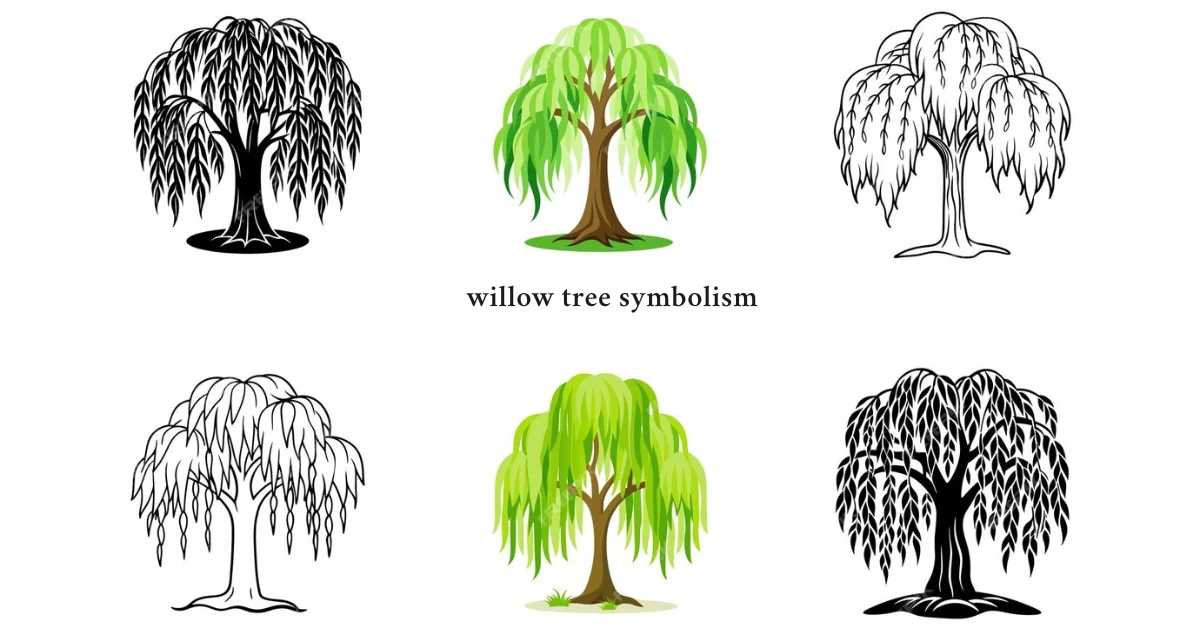Introduction to Willow Trees
Willow trees have long captured the imagination of poets, artists, and nature lovers alike. With their graceful branches swaying gently in the breeze, these majestic trees evoke a sense of peace and introspection. But beyond their aesthetic beauty lies a rich tapestry of symbolism that spans across cultures and centuries. From ancient folklore to modern spirituality, willow tree symbolism offers profound insights into resilience, healing, and connection to nature. Join us as we delve deeper into the meanings embedded within this enchanting tree and discover how its whispers can inspire our lives today.
The Symbolism of Willow Trees in Different Cultures
Willow trees have long been revered across various cultures, each attributing unique meanings to their elegance. In ancient China, the willow symbolizes flexibility and resilience, often used in poetry to express deep emotions.
In Celtic traditions, these trees are associated with the goddess Brigid and represent healing and intuition. The graceful branches of the willow evoke a sense of peace and spiritual connection in this heritage.
Native American tribes view willows as sacred plants linked to water sources. They embody renewal and growth, emphasizing harmony with nature.
Japanese culture honors the willow for its beauty during hanami festivals, where locals celebrate cherry blossoms while admiring nearby willows’ delicate silhouettes.
In many cultures worldwide, the symbolism of willow trees resonates with themes of mourning and remembrance—a gentle reminder of life’s transience interwoven into the fabric of existence.
The Spiritual Meaning of Willow Trees
Willow trees are often regarded as spiritual guardians. Their graceful branches sway gently in the breeze, creating a captivating dance that seems to connect earth and sky.
Many cultures view them as symbols of intuition and emotional healing. The tree’s ability to thrive near water is seen as a reminder of life’s ebb and flow—teaching us resilience amidst change.
In meditation practices, willow trees represent flexibility. They encourage individuals to bend rather than break, embracing life’s challenges with grace.
These trees also embody deep-rooted wisdom. Their long life spans remind us of enduring strength, offering comfort during difficult periods.
For many, simply being in the presence of a willow induces tranquility. It fosters a connection with nature that inspires reflection and calmness within the spirit.
Willow Tree Symbolism in Art and Literature
Willow trees have long captivated artists and writers alike. Their graceful forms evoke emotion, often symbolizing resilience in the face of adversity.
In art, willow trees frequently appear in serene landscapes. They sway gently, embodying tranquility and offering a sense of peace to viewers. Famous painters like Claude Monet captured their delicate beauty, inviting reflection on nature’s impermanence.
Literature also weaves rich narratives around willows. Poets find inspiration in their drooping branches and rustling leaves. The tree becomes a metaphor for mourning or longing—an embodiment of lost love or memories.
Folklore further enhances this symbolism. Many cultures view willows as symbols of protection against evil spirits due to their strong roots and flexibility. This duality makes them complex figures within stories.
Whether standing alone or framed by other elements, willow trees resonate deeply with human experiences, making them powerful symbols across various artistic mediums.
How to Incorporate Willow Tree Symbolism into Your Life
Incorporating willow tree symbolism into your life can be a beautiful journey of self-discovery. Start by surrounding yourself with art that features these graceful trees. This could be paintings, photographs, or even sculptures. Their elegance can serve as daily inspiration.
Consider planting a willow in your garden or yard. Watching it grow and sway in the wind can remind you of resilience and adaptability. If space is limited, a small bonsai version may work just as well.
Embrace the qualities associated with willows—flexibility and emotional healing—in your daily practices. Meditation under a willow-inspired setting invites peace and reflection.
Journaling about your experiences related to change can also help embody this symbolism. Write down moments when you’ve had to bend rather than break during challenging times.
Wear jewelry featuring willow motifs; they can act as personal talismans for strength and serenity throughout your day-to-day life.
Common Misconceptions About Willow Tree Symbolism
Many people associate willow trees solely with sadness due to their drooping branches. This view overlooks the tree’s rich symbolism of resilience and adaptability.
Another misconception is that willows are only connected to grief or mourning. In various cultures, they also represent healing and renewal. Their ability to thrive in challenging environments speaks volumes about overcoming adversity.
Some believe willow trees lack strength because of their flexibility. However, this very flexibility allows them to withstand storms that might break stiffer trees.
Moreover, some think all willows symbolize the same things across cultures. Yet, interpretations vary widely—from fertility in Chinese traditions to intuition and reflection in Western contexts.
Understanding these nuances can deepen our appreciation for willow tree symbolism beyond its surface appearance.
Conclusion
The willow tree stands as a profound symbol across various cultures, art forms, and spiritual beliefs. Its graceful branches sway gently in the breeze, whispering secrets of resilience and transformation. From ancient times to modern interpretations, the deeper meanings of willow trees resonate with those seeking solace or inspiration.
Many people have found ways to incorporate willow tree symbolism into their lives. Whether through planting a willow in your garden for protection, creating art inspired by its form, or simply reflecting on its teachings of adaptability and grace during challenging times—these actions can foster a meaningful connection to this powerful emblem.
While some misconceptions exist about what the willow represents—often misinterpreted as solely a sign of sorrow—it is essential to recognize that this beautiful tree also embodies hope and renewal. With its ability to bend without breaking amidst fierce storms, the wisdom it offers is timeless.
Embracing the essence of the willow can lead you toward greater understanding and appreciation for life’s ebb and flow. As you navigate your journey ahead, consider how these whispers in the wind may guide you along your path.
FAQs
What does the willow tree symbolize across cultures?
Willow trees symbolize resilience, healing, intuition, and renewal, with meanings varying from emotional depth in China to spiritual insight in Celtic and Native American traditions.
Why are willow trees associated with mourning?
Their drooping branches evoke a visual of sorrow, often linking them to grief and remembrance in literature and cultural rituals—though they also symbolize hope and recovery.
How can I use willow tree symbolism in daily life?
You can embrace it through willow-themed art, meditation, planting a willow, or using it as a reminder to stay flexible and grounded during personal growth and change.
What is the spiritual significance of willow trees?
Spiritually, willow trees represent connection to nature, emotional healing, and adaptability, offering comfort and peace through life’s transitions.
Are willow trees only symbols of sadness?
Not at all. While they are linked to sorrow, they more deeply represent resilience, growth, and the strength to bend without breaking—true symbols of enduring spirit.

